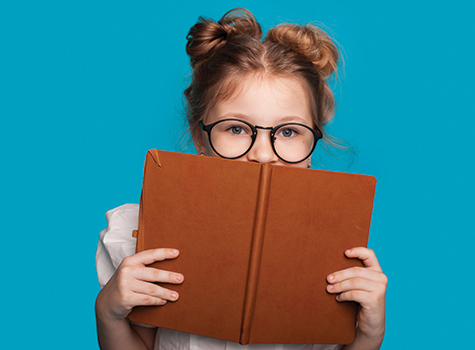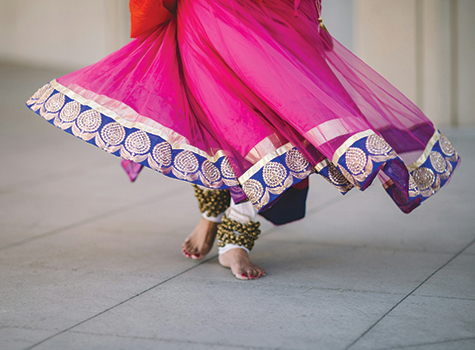By Dr. Keshav Bhat

Since the pandemic began, the protracted lockdowns experienced by people in many jurisdictions around the world have taken an unquantified but likely severe toll on human health and well-being.
Of particular concern are the children and adolescents who, upon the closure of schools and public leisure centers, have been required to receive their education, to socialize, and to attempt to keep themselves entertained, all while remaining at home, with digital technology usually doing the heavy lifting in all three domains.
Apart from the unsurprising impacts on children’s mental health, research has begun to show that these behaviors are producing a range of further detrimental health effects — including on the health of children’s eyes, with reports surfacing of a surge in what experts are calling “quarantine myopia.”
“So, my kid needs glasses, no big deal.”
“It’s just nearsightedness.”
It’s not surprising that myopia, or nearsightedness, is often seen as a normal part of life as one in four parents have a myopic child. It’s common for parents to respond to the growing threat of myopia with statements like, “My child needs glasses, no big deal.” Yet, myopia increases the risk of serious, sight threatening conditions. Myopia has been shown to be an independent risk factor for glaucoma, cataracts, and retinal detachment.
The long-term risk factors may seem like issues later in life that we don’t have to worry about today but protecting your child’s vision is vital during their school-age years. If their eyes grow irregularly, as they do with myopia, these issues become more of a risk.
A diopter is the unit used to measure the correction, or focusing power, of the lens your eye requires. A one diopter increase in myopia raises the likelihood of developing myopic macular degeneration by 67 percent. Whereas a one diopter decrease in myopia reduces the likelihood of developing myopic macular degeneration, or loss of vision, by 40 percent.
Conventional glasses, otherwise known as single vision glasses, correct vision but they do not slow down the progression of myopia or address the underlying issue that the eye is growing too long. So, what can we do? We can look at a process called myopia management.
What is myopia management?
Myopia management is a process in which an eye care professional:
● Identifies risk factors for myopia and high myopia
● Provides information, advice and recommendations to children, parents and other stakeholders
● Prescribes appropriate interventions to slow myopia progression and reduce the risk of developing high myopia
● Is proactive in taking and recommending steps
In addition to taking and recommending steps, your doctor will track the progression of myopia after they diagnose your child.
Some of the treatment options include:
● Orthokeratology (Ortho-K) or Corneal Refractive Therapy (CRT): hard contacts that are worn overnight to reshape the eye.
● Contact lenses: specialized multifocal daytime lenses.
● Other pharmacologic interventions are in development but are not yet FDA approved.
How can you get myopia management for your child?
Your eye doctor can help determine if your child has myopia and discuss the next steps. It’s important not to rely on vision screenings, like those that children may get at school, as vision screenings provide less than 4 percent of the information generated during a comprehensive eye exam and miss up to 75 percent of children with vision problems.
There is a 25 percent chance that a child will develop myopia if one parent is myopic. That number jumps to 50 percent if both parents are myopic. Parents who have myopia themselves should be especially interested in finding an eye care professional who specializes in myopia management.
Some eye doctors are investing in the world’s first device to combine the important measurement methods axial length, refraction values and the central corneal radii called Myopia Master.
The quick, contactless, and extremely accurate measurement method is not influenced by the focusing status of the eye and delivers reproducible results. Much like the growth charts presented at your pediatrician’s office, doctors can chart the likely progression of your child’s prescription through their teen years.
In our practice we talk a lot about the importance of getting kids to spend time away from screens and to get outdoors as much as possible. Together, these factors can support kids’ healthy vision. Especially, after a year when nearly two out of three of parents reported that their children spent more than 50 percent more time indoors due to the pandemic.
How sunlight helps with myopia
Spending time outdoors is one of the key lifestyle changes known to help mitigate the risk of myopia in children. One study cited by the American Academy of Ophthalmology, looked at kids who spent just 40 extra minutes outdoors each day. These kids lowered their risk of getting myopia or developing more severe myopia (stronger prescription/eyeglasses). The kids who spent more time indoors, more time reading or more time on their digital devices, were more likely to get myopia or severe myopia.
The American Optometric Association suggests anywhere from one to three more hours of outdoor activity a day to help protect eyesight. With Spring and Summer on the horizon, we as parents must put together a checklist of creative ways to get your child to spend more time outside.
Dr. Keshav Bhat is an optometrist serving the community in South Charlotte for over 15 years. Contact: [email protected]



